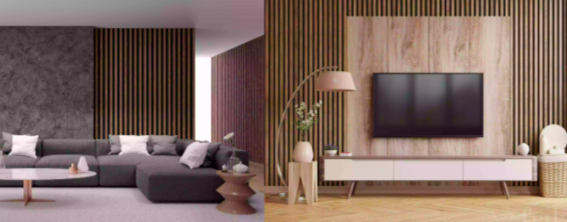Door frames are a fundamental component of any interior or exterior doorway. While often overlooked in design, they play a critical role in ensuring the proper functioning, appearance, and durability of doors. More than just a trim around an opening, a door frame offers structural support, maintains alignment, and adds a neat, polished look to door frames installations. Whether you’re renovating a home or constructing a new space, understanding the value of well-made door frames can enhance the long-term performance and style of your build.
Structural Strength for Long-Term Stability
The primary function of a door frame is to provide a solid base for the door itself. A properly installed frame ensures that the door hangs straight, swings smoothly, and closes securely. It distributes the weight of the door and keeps it aligned with the wall opening, preventing sagging or uneven gaps over time.
In high-use areas, door frames must endure repeated opening and closing while resisting warping and structural shifting. For this reason, quality materials like hardwood, engineered wood, or MDF are commonly used to create door frames that offer both strength and dimensional stability.
Accurate Fitting for Efficient Door Operation
An accurately sized and installed door frame is key to ensuring that the door fits properly. If the frame is out of alignment, it can lead to doors sticking, rubbing against the floor, or failing to latch. Even small imperfections in the frame can affect the overall operation of the door.
Modern frame kits or pre-cut frames are available to help simplify the fitting process. These ready-to-use options are particularly useful in DIY installations or time-sensitive construction projects, where a precise fit can be achieved without the need for major modifications on-site.
Enhances the Visual Appeal of Interiors
Beyond its structural purpose, a door frame contributes to the finished look of a room. It neatly borders the doorway, conceals gaps between the wall and door, and allows for the attachment of architraves or trims. These visual enhancements give a doorway a clean, framed appearance that complements both modern and traditional design styles.
Door frames can be painted or stained to match interior décor, making them versatile in a range of settings. From minimalist white finishes to rich wooden tones, the frame can be styled to blend in or stand out depending on the design preference.
Supports Additional Hardware and Accessories
Door frames are essential for holding hinges, latches, locks, and other hardware in place. A sturdy frame can accommodate these components without movement or failure. In security-sensitive installations like exterior doors or main entrances, frames are often reinforced to hold deadbolts and additional locking systems securely.
Some door frames also feature seals or grooves for weather stripping, helping to improve insulation, soundproofing, and energy efficiency. This added functionality makes the door frame more than just a support structure—it becomes a part of the home’s comfort and performance systems.
Simple Maintenance and Long-Term Value
Door frames are relatively low-maintenance but require occasional checks to ensure they remain square and damage-free. A well-installed frame can last for decades, especially when protected from moisture, impact, and shifting foundations.
For homeowners and builders alike, investing in durable, well-designed door frames can reduce repair costs and improve the overall integrity of door installations over time.
Conclusion
Door frames are vital for more than just aesthetics—they provide the structure, alignment, and durability necessary for smooth door operation. Whether you’re upgrading an old frame or installing new ones in a build, choosing quality materials and accurate fitting ensures both functional and visual success. With the right frame in place, every door becomes a seamless part of the home’s design and structure.

